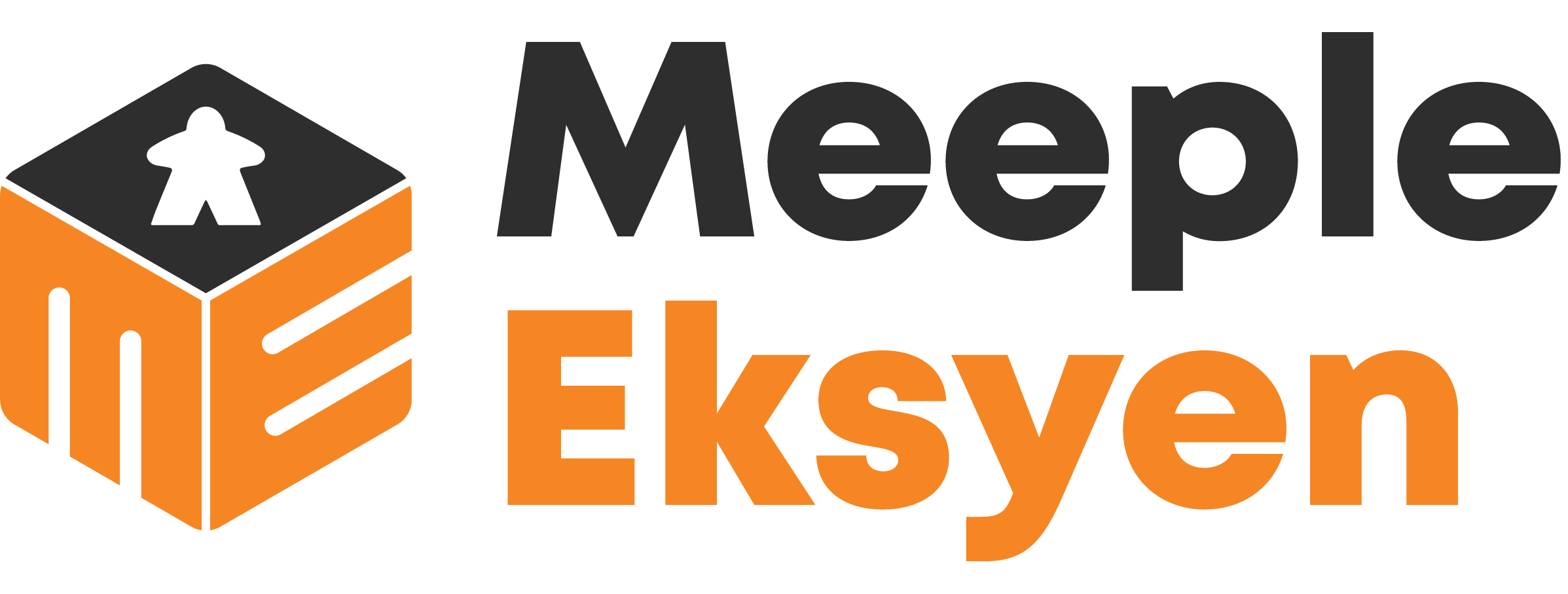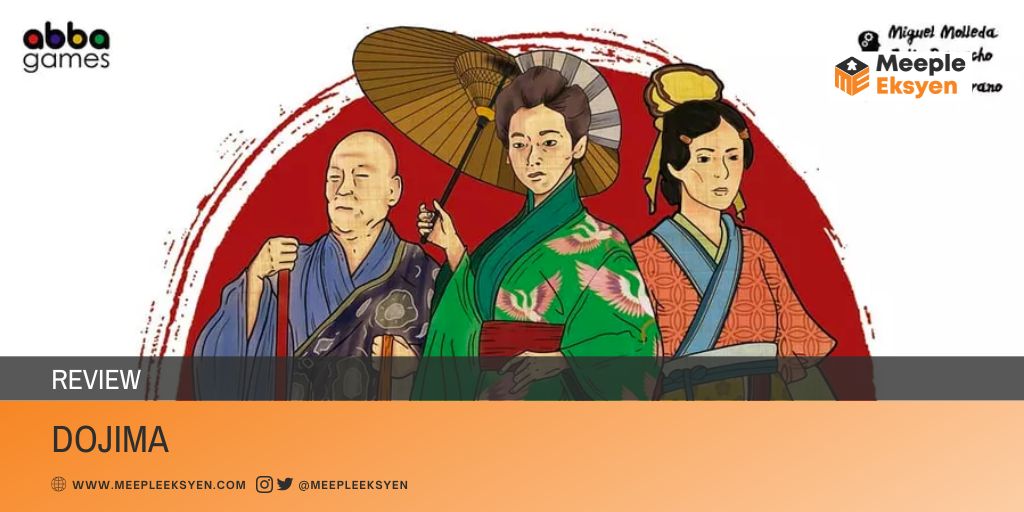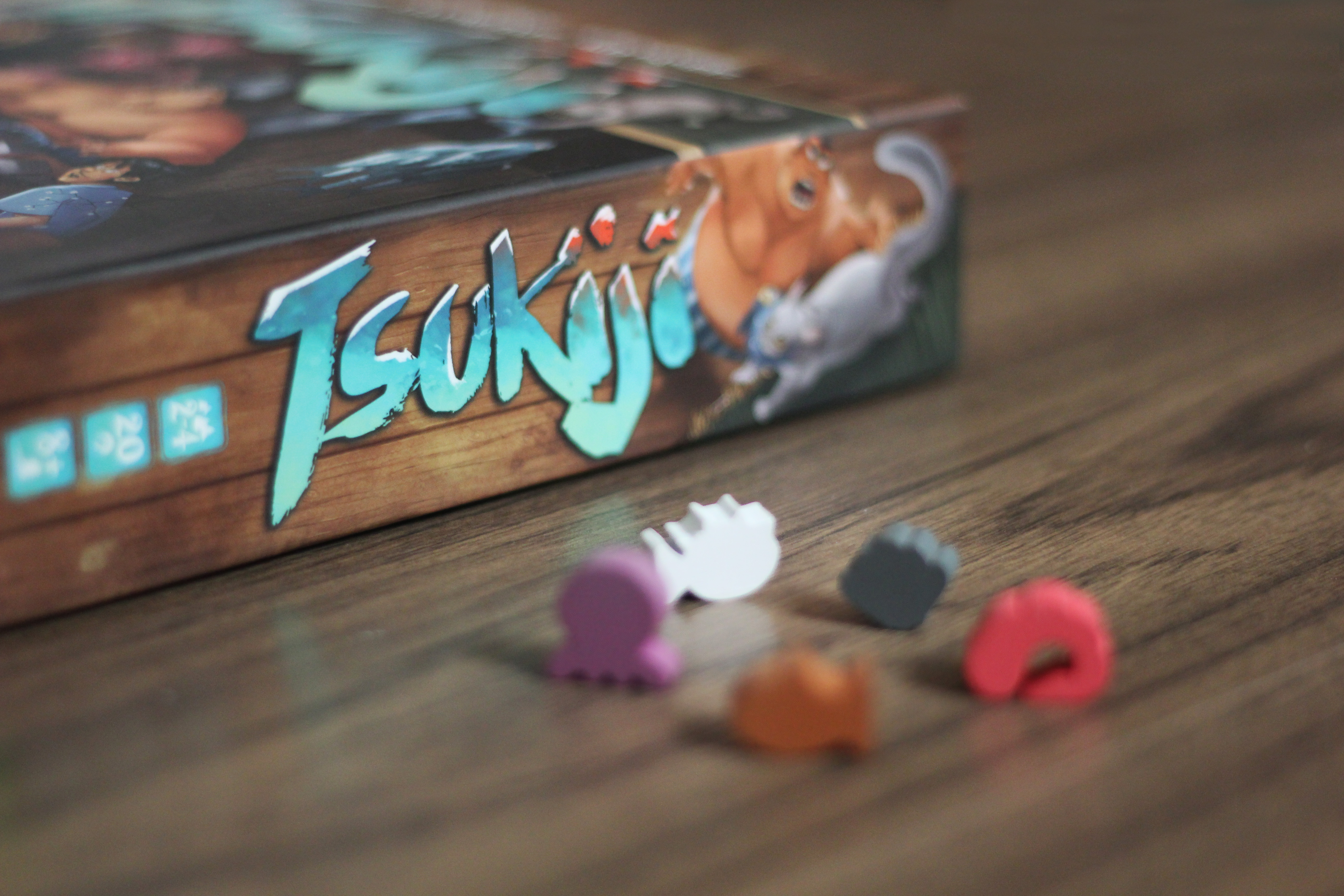Agriculture is one of the earliest efforts in the history of humanity, and it is opulent, in both theme and mechanics, for board games. So, guess what first came to my mind when they mentioned a game, whose name is based on a famous rice exchange in Osaka? What could be coming from one of the earliest exchange markets in the world? Well, there is a possibility for a worker placement game. Or perhaps, we have seen, or even played, something involving that dice management mechanic. It could also be an action-programming game, which carries the course of planting and selling rice.
The question still stands. Which game is it, then? If you guessed either one of them, you might be right. Truth be told, Dojima feels like combining all of them at the same time.
A tale of rice brokers in Osaka
What fazes me is that, with all those in the mix, the actual Dojima itself actually runs on a simple gaming system. Players draft advisors, as well as some special characters. They roll a few dice, and then assign to it their chosen advisor and workers — which has its advisor counterpart, i.e. a waterer and water advisors. This structure creates a sort of pseudo-worker placement mechanic at work.
Dojima simulates the whole process of rice farming. Starting from paddy plantation, along with its irrigation, and afterwards harvesting before selling them for money. The latter constitutes Victory Points to determine the winner. I love how the game’s duration is determined by the remaining money in the pool, as it can be seen as a “market cap.” When the pool runs out, it depicts seasons changing. We undergo the spring to summer, and then comes autumn, before the game ends in winter. Thematically interesting and sound.
The randomness of the dice keeps the game unpredictable, but it also makes it welcoming for casual players. Whereas accessibility for this player segment, more hardcore gamers might opt towards achieving best-case scenarios on every given outcome. There is also a certain bluffing mechanic combined with the action programming, where we need to plan the best step we can take with the advisor we have. For the basic workers to actually do anything, or even avoid penalties, they have to be placed near or directly within the same dice number of their respective advisors. It is as vital to pay attention to what your opponents seem to be planning, as much as keeping your rice production in check.
Possible solo-variant for Dojima
With all that complexities, it is worth mentioning again how simple the actual game mechanic runs. I even attempted creating a solo variant out of it. Personally, it runs pretty well. If you’d like to try, simply set up a 3-player game, and whenever your opponents are to draft or assign workers to their dice numbers, shuffle and deal them randomly. Although it might show unproductive moves sometimes, it’s still pretty challenging to beat the “AI.”
Some remarks for improvements
Dojima is not without flaws, unfortunately. I think the two-player variant falls quite short, which something most board games in the market suffer. It is definitely a Herculean task to create a game that caters all player counts. Absolutely understandable. Thus, I much prefer to set up an AI as the third player instead, whenever only two players are available to play. I also think that its simplicity can end up being the game’s downfall.
I feel like the replay value is quite low as well, personally. After a few games, even by having other special characters in place, it quickly became repetitive. A Dojima conclave can run pretty quickly. Nevertheless, although everything runs according to each other’s plans, depleting the money pool sometimes can end up taking much time. And that pinpoints this shortcoming. With the more or less similar process on each round, it can get old pretty fast.
Final thoughts
Dojima is a simple game that hides a lot of complexity within its tiny component count. It should satisfy both casual, and, perhaps, the hardcore players alike. Regardless, I think it should be more of a filler game for your game nights instead of the main course due to its relatively limited replay value.
The core idea is solid, that’s fore sure. Dojima, however, requires a specific player count to be enjoyed fully. I would not suggest playing with less than three heads, and definitely not more than five.
Do you love board games as much as we do? Support us!
Thank you for reading our articles! If you enjoyed our work and want more captivating board game contents, make sure to:
👉 Follow us on our social media — you can find us on ![]()
![]()
![]() Click one of the icons to land on our social media, or find us @meepleeksyen there, it’s just a click away! Stay updated with our latest board game reviews and previews by following us on those platforms 📱👍
Click one of the icons to land on our social media, or find us @meepleeksyen there, it’s just a click away! Stay updated with our latest board game reviews and previews by following us on those platforms 📱👍
💬 Do you have contrasting opinions? Leave a comment — share your thoughts with us, we’d love to hear (or read) yours! Have you played this game before? Did you have something similar as well? Or perhaps, something more personal, like what are your favourite board games? Let’s discuss in the comments below!
🙏 Support Us! Your generous support can help us produce even better content in the future. If you love what we do, consider making a donation to our blog. Every contribution counts and means a lot to us! You can either donate locally with Indonesian Rupiah (IDR) via Trakteer ![]() or for international readers with another currency through Buy Me a Coffee
or for international readers with another currency through Buy Me a Coffee ![]() It helps us to survive, too! 💰 Click one of the button below 👇
It helps us to survive, too! 💰 Click one of the button below 👇





